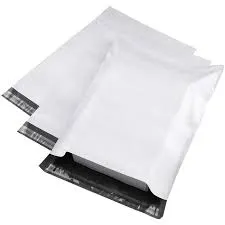Eco-Friendly Brown Paper Packaging Solutions | Sustainable & Customizable Options
The Importance of Brown Paper Packaging
In today's world, where environmental sustainability has become a pressing concern, brown paper packaging has emerged as a significant player in the quest for eco-friendly alternatives. As consumers become more conscious of their purchasing choices, the demand for sustainable packaging solutions has grown tremendously. Brown paper packaging, derived from natural fibers and recyclable materials, has garnered attention for its numerous benefits.
One of the primary advantages of brown paper packaging is its biodegradability. Unlike plastic, which can take hundreds of years to decompose, brown paper breaks down naturally in the environment within a short period. This characteristic helps reduce landfill waste and lowers the overall environmental footprint of businesses that choose sustainable packaging options. As a result, companies that adopt brown paper packaging not only contribute to a healthier planet but also enhance their brand image by showcasing their commitment to sustainability.
Moreover, brown paper packaging is versatile and suitable for various applications. From simple paper bags to more intricate boxes, brown paper can be molded and crafted to fit diverse products and industries. It serves as an effective barrier against moisture and contamination, ensuring that the items it holds remain protected during transit and storage. This versatility makes it an ideal choice for food packaging, retail goods, and even e-commerce shipments.
brown paper packaging

Brown paper packaging also offers an aesthetic appeal that resonates with consumers. The natural and rustic appearance of brown paper conveys a sense of authenticity and simplicity, aligning well with the growing trend of minimalism in design. Many businesses have embraced this look, recognizing that eco-conscious consumers are often drawn to products that reflect their values. By incorporating brown paper packaging into their branding, companies can strengthen their connection with their target audience.
In addition to its environmental and aesthetic benefits, brown paper packaging is often more cost-effective than plastic or other synthetic alternatives. The production of brown paper typically requires less energy and resources, making it an economically viable choice for businesses looking to cut costs while remaining environmentally responsible.
In conclusion, brown paper packaging represents a sustainable, versatile, and visually appealing option for businesses and consumers alike. As we move toward a more eco-conscious future, embracing such sustainable practices can lead to a significant positive impact on our environment. It’s essential for companies to recognize the value of brown paper packaging not just as a practical solution but as a key component of their environmental responsibility strategy.
-
The Best Uses for Small Trash Bags in Daily LifeNewsJul.01,2025
-
Stylish Reusable Grocery Bags TrendsNewsJul.01,2025
-
Shipping Advantages of Using Bubble Envelopes BulkNewsJul.01,2025
-
How Compostable Mailing Bags Reduce Environmental ImpactNewsJul.01,2025
-
Environmentally - Friendly Bulk Poly MailersNewsJul.01,2025
-
Eco Friendly Custom Laminated Tote BagsNewsJul.01,2025
-
Have the freedom of customizing your custom mailers any way you want! Our dedicated packaging support will help deliver you the mailing experience you need to elevate your shipping experience to the next level! Start making a strong impression on your customers and stand out from your competitors! -
LIYA uses high quality raw materials which directly purchased from large enterprises domestic and overseas such as PetroChina, Sinopec, Sabic, Equate, ExxonMobil, Dow Chemical, Total, and Borouge, ensuring the price advantage and quality of the raw materials. -
LIYA uses high quality raw materials which directly purchased from large enterprises domestic and overseas such as PetroChina, Sinopec, Sabic, Equate, ExxonMobil, Dow Chemical, Total, and Borouge, ensuring the price advantage and quality of the raw materials.
Warning: Undefined array key "ga-feild" in /home/www/wwwroot/HTML/www.exportstart.com/wp-content/plugins/accelerated-mobile-pages/templates/features.php on line 6714





